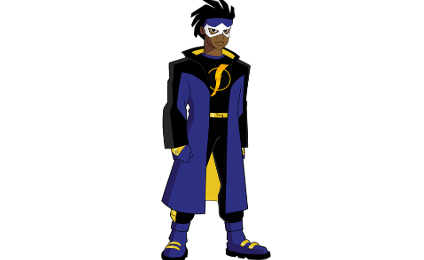Black History Month: Static Shock: The Electric Hero
- Asia Mmkay
- Feb 13
- 3 min read

When we talk about Black superheroes, Static Shock deserves a front-row seat at the table. Virgil Hawkins, the teen behind the mask, wasn’t just zipping around with electromagnetic powers; he was breaking barriers and making history. Created by the groundbreaking Milestone Comics and brought to life in the iconic animated series Static Shock, Virgil became a symbol of hope, representation, and unapologetic coolness. Let’s dive into why this electrifying hero is a Black history icon—with a little humor along the way.
A Shocking Origin
Virgil’s story wasn’t your typical superhero origin. No billionaire inheritance, alien planet, or radioactive spider bite here. Instead, Virgil was a regular kid from Dakota City trying to navigate high school, crushes, and bullies. His life took a wild turn after he got caught in the “Big Bang,” a chemical explosion that gave him electromagnetic powers. Talk about a glow-up—literally. What made Static unique was how grounded his story was. Virgil wasn’t just battling supervillains; he was dealing with real-life issues like racism, gang violence, and socioeconomic struggles. He showed us that being a hero wasn’t just about superpowers—it was about standing up for what’s right, even when the odds were stacked against you.
Representation Matters
Static Shock wasn’t just a show; it was a cultural moment. For many Black kids, seeing Virgil Hawkins as the lead in a superhero series was revolutionary. He wasn’t a sidekick, a token character, or comic relief. He was the star. Static Shock tackled serious topics head-on, from police brutality to gun violence to homelessness, all while keeping it relatable and engaging. Virgil made us laugh, cry, and cheer, often all in the same episode. And let’s not forget: Static had swag. From his iconic black-and-yellow suit to his witty comebacks, Virgil embodied coolness. He was the superhero you wanted to be friends with, not just because he could charge your phone in a pinch, but because he made doing the right thing look so effortless.
The Power of Friendship
Every hero needs a squad, and Virgil’s best friend Richie Foley was the ultimate ride-or-die. Together, they formed one of the most iconic duos in superhero history. Richie wasn’t just comic relief; he was a tech genius who eventually became a hero in his own right as Gear. Their friendship was a reminder that behind every great hero is an even greater support system—preferably one with mad engineering skills. But Static’s impact went beyond just Richie. His relationships with his family, friends, and even his enemies were layered and complex. Whether it was his strong bond with his father or his tense rivalry with Ebon, Static’s connections added depth to his character and made his journey all the more compelling.
Tackling the Tough Topics
Static Shock wasn’t afraid to go there. The show addressed issues that many cartoons wouldn’t touch with a ten-foot pole. Racism? Check. Gun violence? Check. Bullying, homelessness, and even mental health? Double check. Static Shock didn’t just entertain; it educated. It showed viewers that superheroes could be socially conscious while still kicking butt and looking cool doing it. Virgil’s storylines often reflected the challenges faced by Black communities, but they were handled with nuance and care. Whether he was dealing with systemic injustice or trying to navigate his identity as a young Black man, Static’s journey was authentic and inspiring.
Static Shock’s Legacy
Static Shock didn’t just leave an impact on its audience; it paved the way for more diverse storytelling in media. Virgil Hawkins proved that Black superheroes weren’t just viable—they were essential. His success opened doors for characters like Miles Morales, Black Panther, and Cyborg to shine in mainstream media. And let’s not forget the iconic theme song. The second you heard that beat drop, you knew you were in for an epic adventure. Static Shock wasn’t just a show; it was an experience.
A Hero for the Ages
Virgil Hawkins isn’t just a superhero; he’s a cultural icon. He showed us that you don’t need a cape to be a hero. All you need is courage, integrity, and maybe a hover disk made of pure electromagnetic energy. Static Shock reminded us that representation matters, that kindness is a superpower, and that everyone has the potential to make a difference. So here’s to Static: the electric hero who charged up our childhoods and lit the way for future generations. Virgil Hawkins, we salute you. Now, if you’ll excuse us, we’re off to binge-watch Static Shock and relive every electrifying moment.











Comments